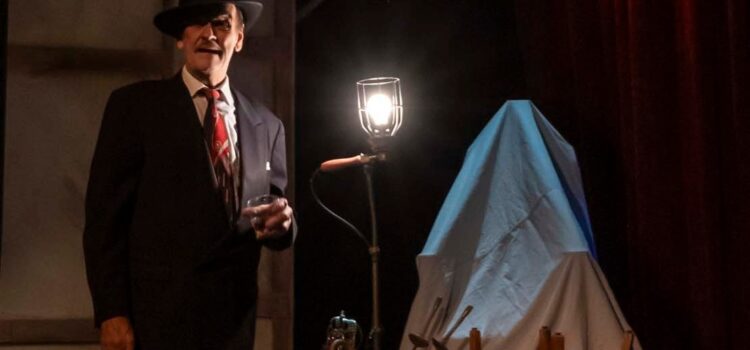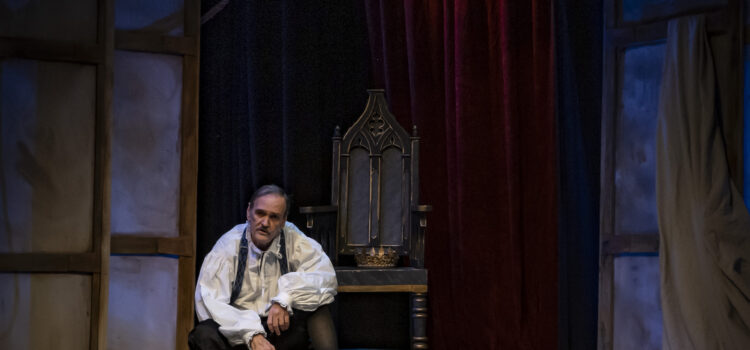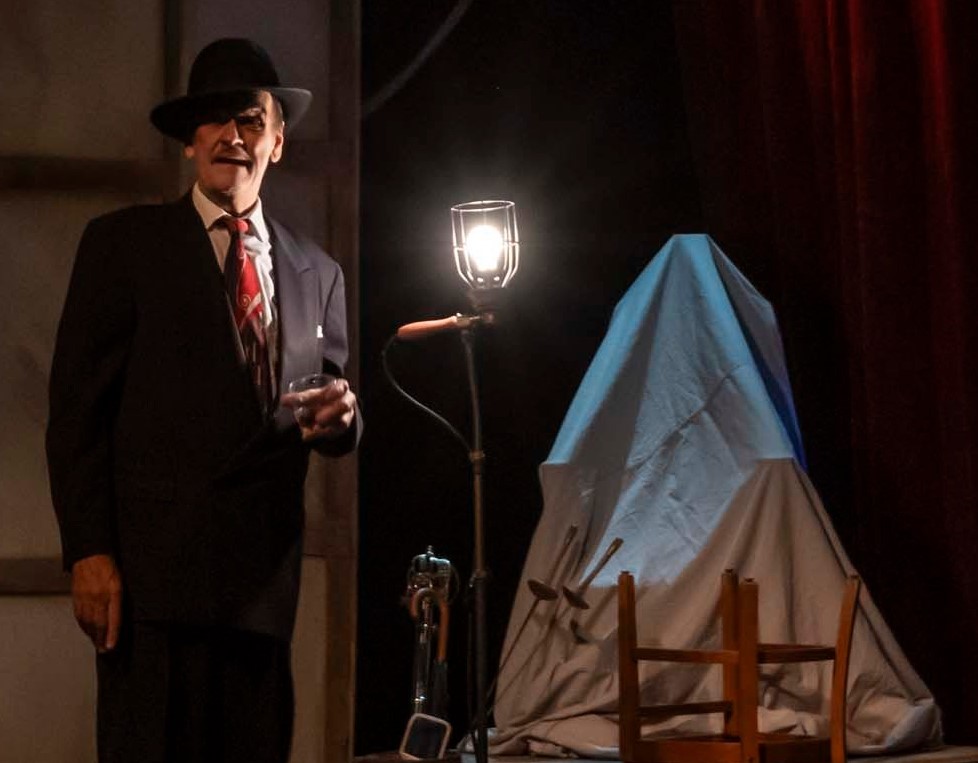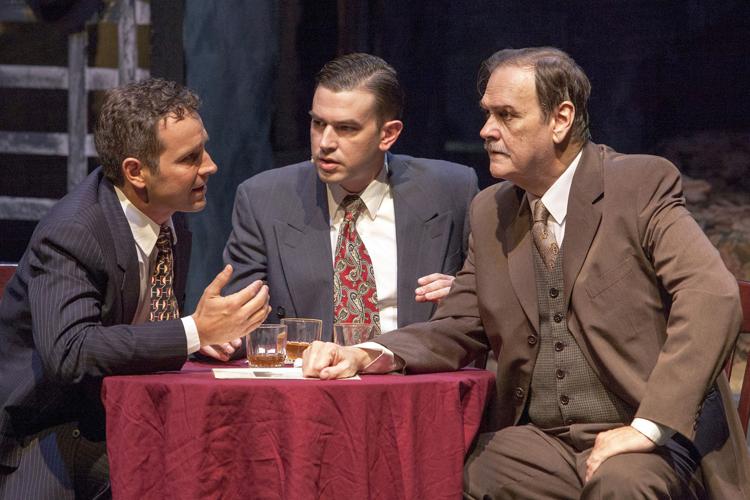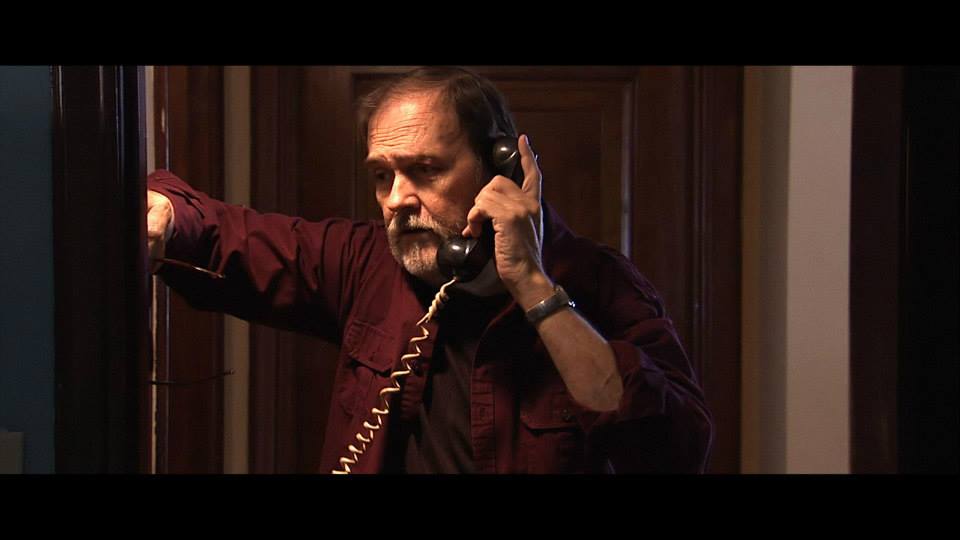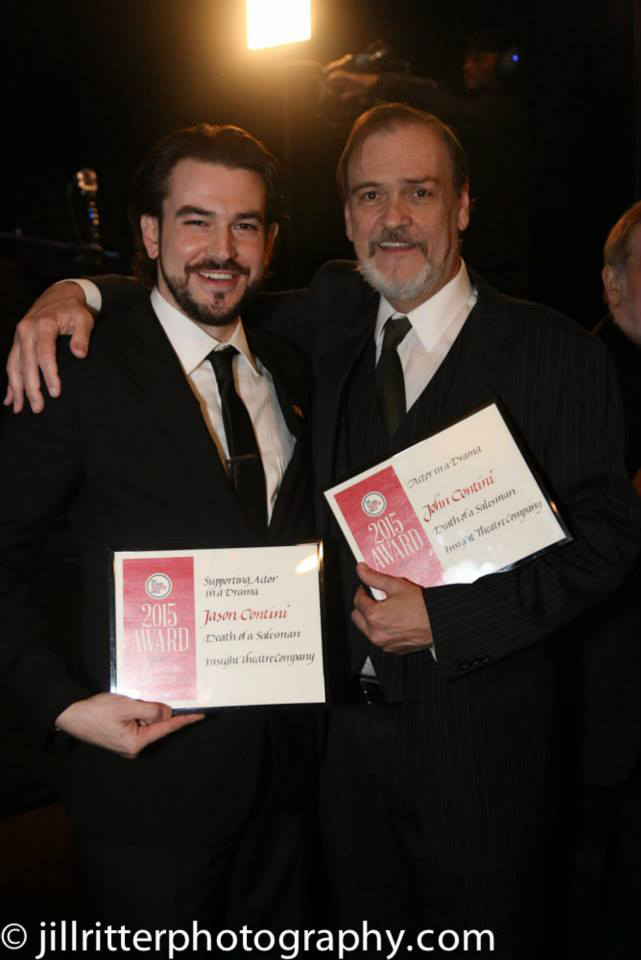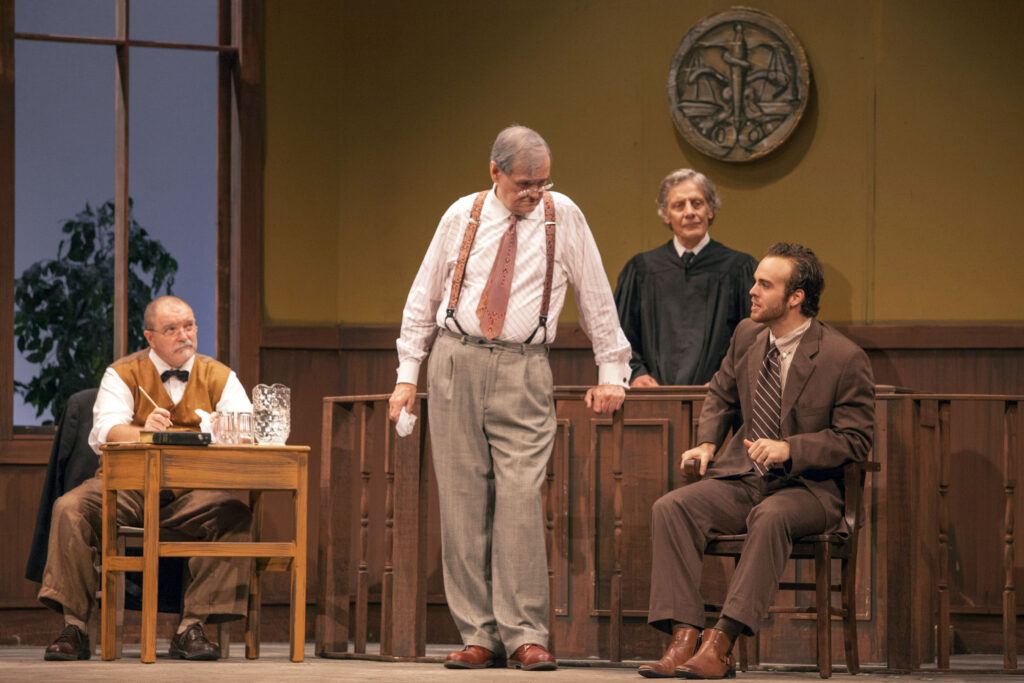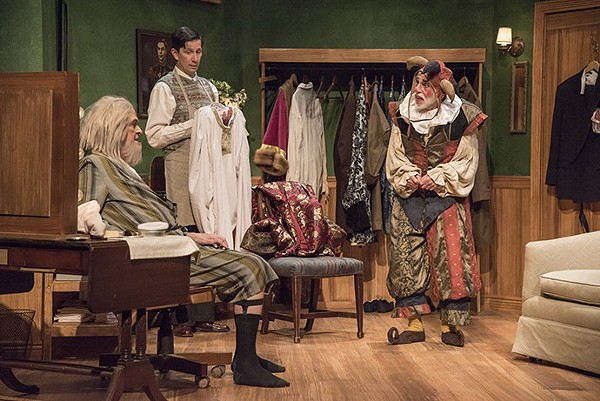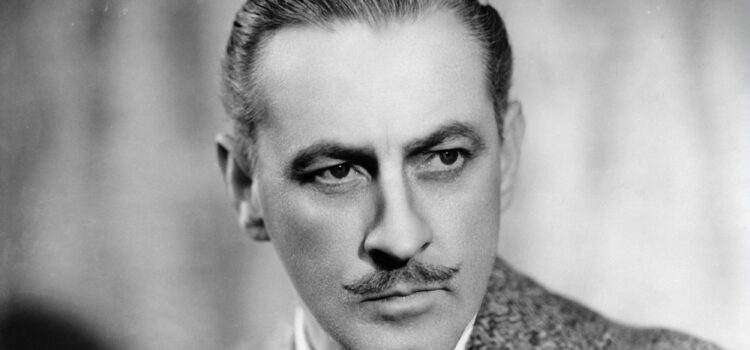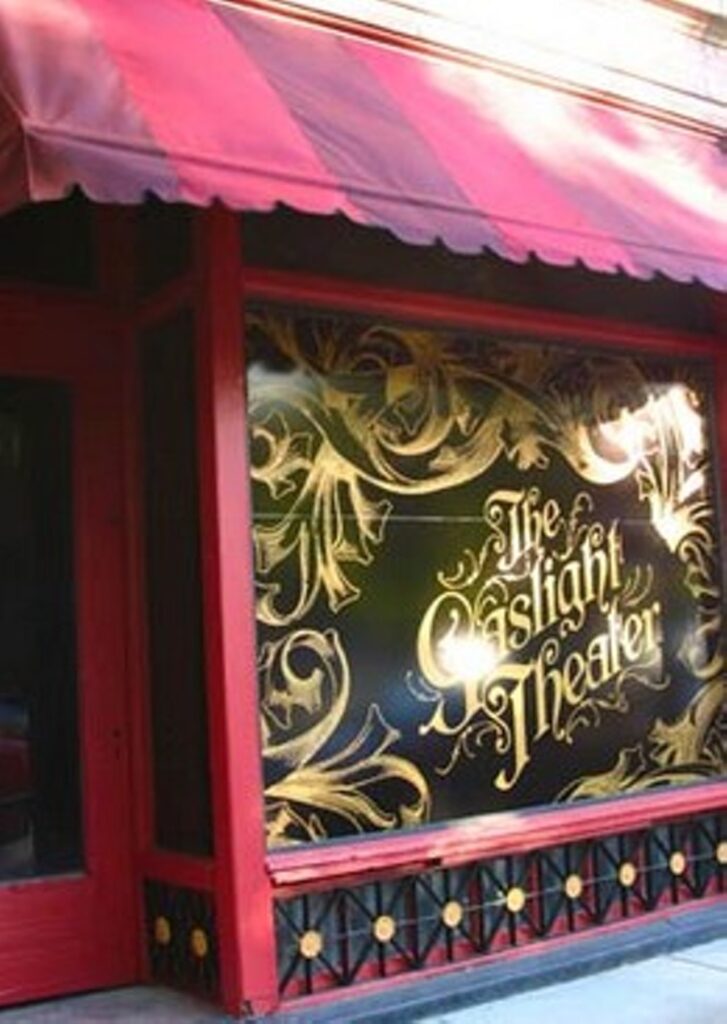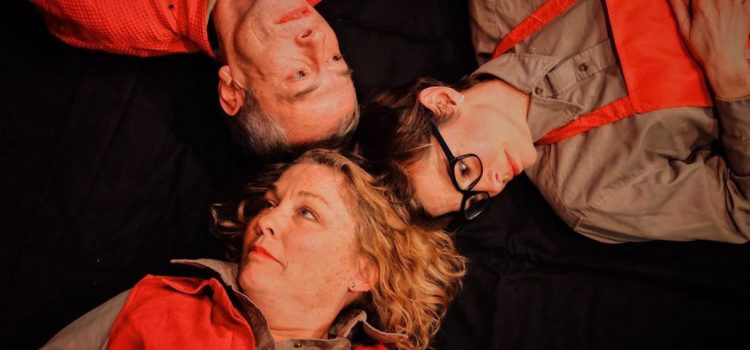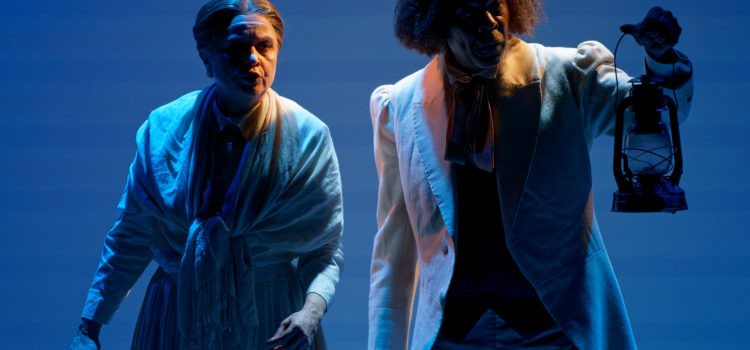By Lynn Venhaus
Local treasure John Contini is at his best in a vibrant, vigorous portrayal of legendary actor John Barrymore that is both funny and sad at the same time, but never sags or lags for a second.
It’s a remarkable tour-de-force for a seasoned pro used to delivering classic portrayals of Shakespeare, Albee, Miller, Mamet and more during a career that has spanned over 40 years.
Barrymore came to prominence for his stage work, notably an acclaimed “Hamlet” in 1922, and went on to become one of the most influential and idolized actors of that era. His movies included “Grand Hotel,” “Beau Brummel,” “Dinner at Eight,” “Twentieth Century” and “Svengali.”
He died at age 60 in 1942, and by then, his sordid personal life had eclipsed his professional accomplishments.
But even with the title “Barrymore,” it’s not a one-man show. One of the most surprising aspects of this captivating work is that it’s a two-hander, and sparring with an offstage prompter, Frank the stage manager, offers insight into the actor’s twilight years.
Frank is voiced by Alexander Huber, and his shifting moods come through loud and clear –exasperated and stern as he pleads and cajoles with the once-great but in serious decline star to get his act together and complete the tasks at hand, which is rehearsing for his comeback as “Richard III.”
The famous actor is, by turns, insufferable, mean, vainglorious, rueful, flamboyant, distressed, ribald and pitiable, and Contini is seamless as he swiftly moves in and out of Barrymore’s many moods.
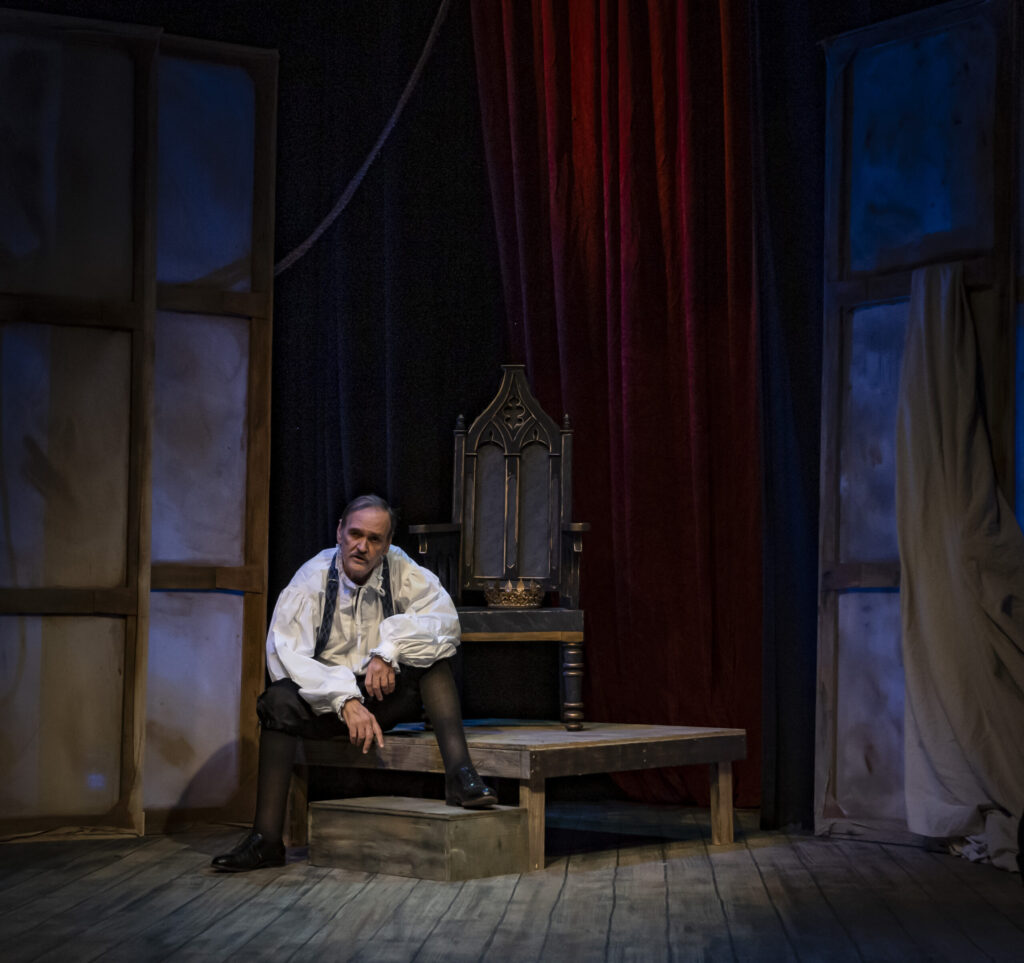
Playwright William Luce depicts Barrymore a few months before his death as he is rehearsing the Shakespeare tragedy which would be a revival of his 1920 Broadway triumph. This is fiction, of course.
The setting is a small stage that he has rented to prepare for what he hopes will be his comeback. But he is too far gone, ravaged by alcoholism and hard living. But he sure has hilarious stories to share.
In two acts, he jokes with the audience, breaking the fourth wall, imitates his siblings Lionel and Ethel, both legendary actors themselves, and reminisces about better times. He had been married four times and is candid in sharing sexual exploits and off-color jokes.
Luce’s play was produced on Broadway in 1997, with Christopher Plummer in the title role. He won the Tony Award for his performance and reprised the role in a 2011 film adaptation.
Contini has portrayed the superstar thespian before, for the former Avalon Theatre Company at the ArtSpace at Crestwood Court in 2009 and won a Kevin Kline Award for Outstanding Lead Actor in a Play.
While Contini commands attention from start to finish, what is also noteworthy is Erin Kelley’s supple direction. Kelley co-founded the Avalon Theatre Company and served as its managing artistic director for seven years. However, this is a fresh interpretation of that show.
Also lending their talents to this superb collaboration is scenery and lighting designer Patrick Huber, bathing the stage with a ghost light and minimal illumination for a forlorn effect, and costume designer Teresa Doggett, whose wise sartorial choices dress Barrymore in a dapper suit for the first act and in a well-worn regal outfit for King Richard III in the second act.
Emma Glose’s prop designs create a bygone era’s theatrical tools and provide a few of the actor’s possessions. Kristi Gunther, production manager, and Amy Paige, stage manager, keep things moving at a swift clip.
A witty and wise work, “Barrymore” showcases artistry while offering both comedy and pathos in a virtuosic production.
The St. Louis Actors’ Studio presents “Barrymore” in a limited engagement Dec. 1 -10 at the Gaslight Theatre, 360 N. Boyle. Performances are Friday through Sunday Dec. 1-3, and Tuesday through Sunday, Dec. 5-10, at 8 p.m. except for Sundays, which are at 3 p.m. General admission tickets are $40 each plus fees, $35 each plus fees for students with valid ID and seniors 65+, available via Ticketmaster or at the theater box office one hour before showtime. For more information, visit stlas.org or email [email protected].
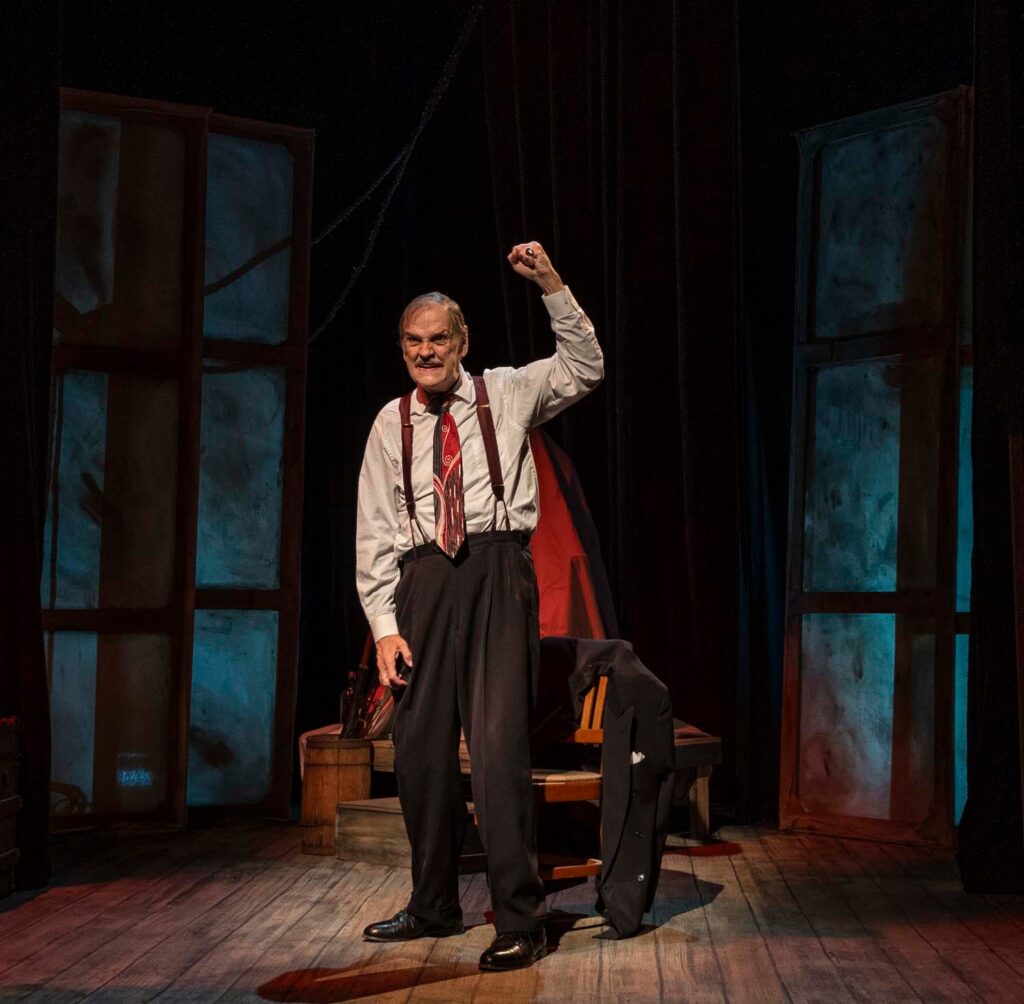

Lynn (Zipfel) Venhaus has had a continuous byline in St. Louis metro region publications since 1978. She writes features and news for Belleville News-Democrat and contributes to St. Louis magazine and other publications.
She is a Rotten Tomatoes-approved film critic, currently reviews films for Webster-Kirkwood Times and KTRS Radio, covers entertainment for PopLifeSTL.com and co-hosts podcast PopLifeSTL.com…Presents.
She is a member of Critics Choice Association, where she serves on the women’s and marketing committees; Alliance of Women Film Journalists; and on the board of the St. Louis Film Critics Association. She is a founding and board member of the St. Louis Theater Circle.
She is retired from teaching journalism/media as an adjunct college instructor.

